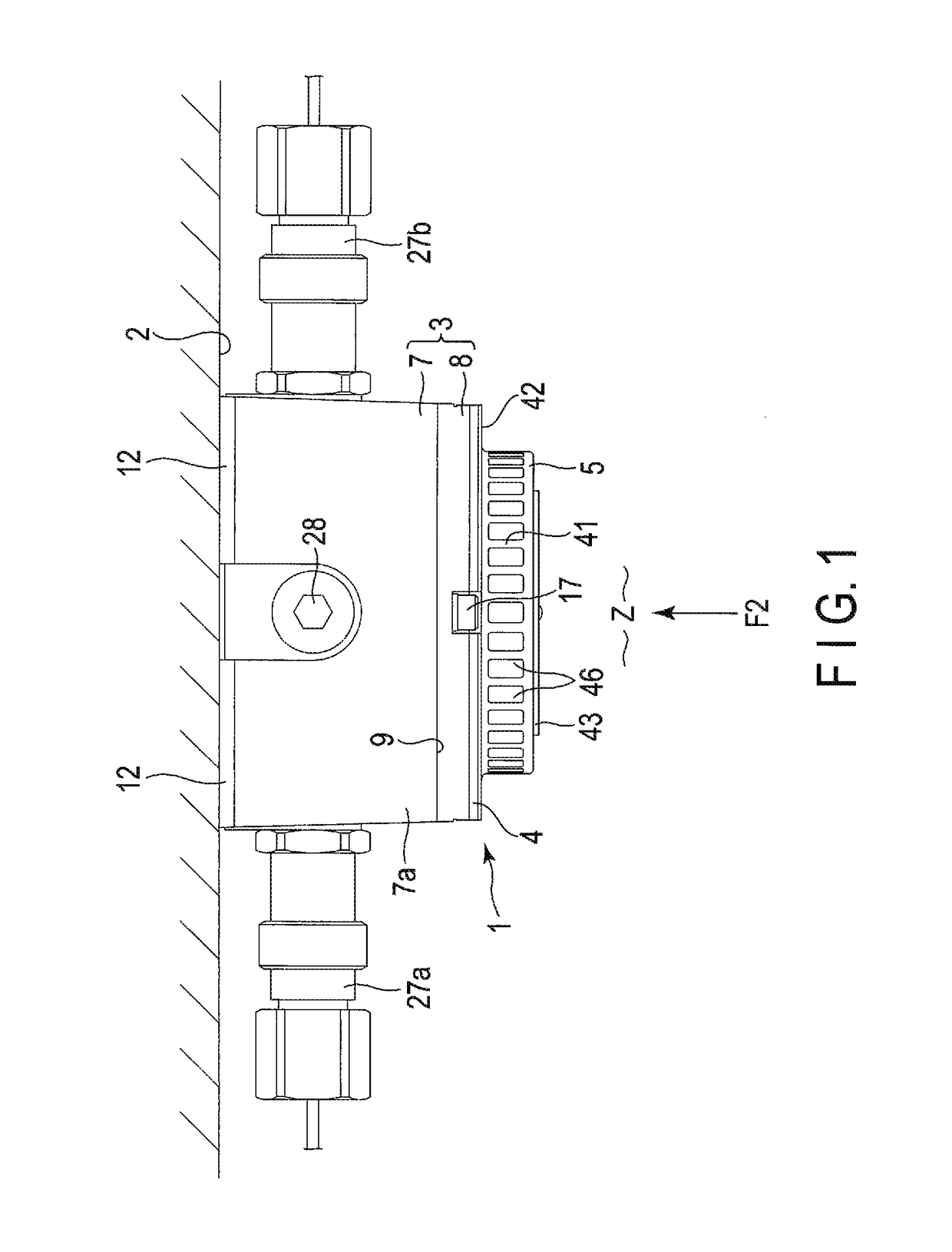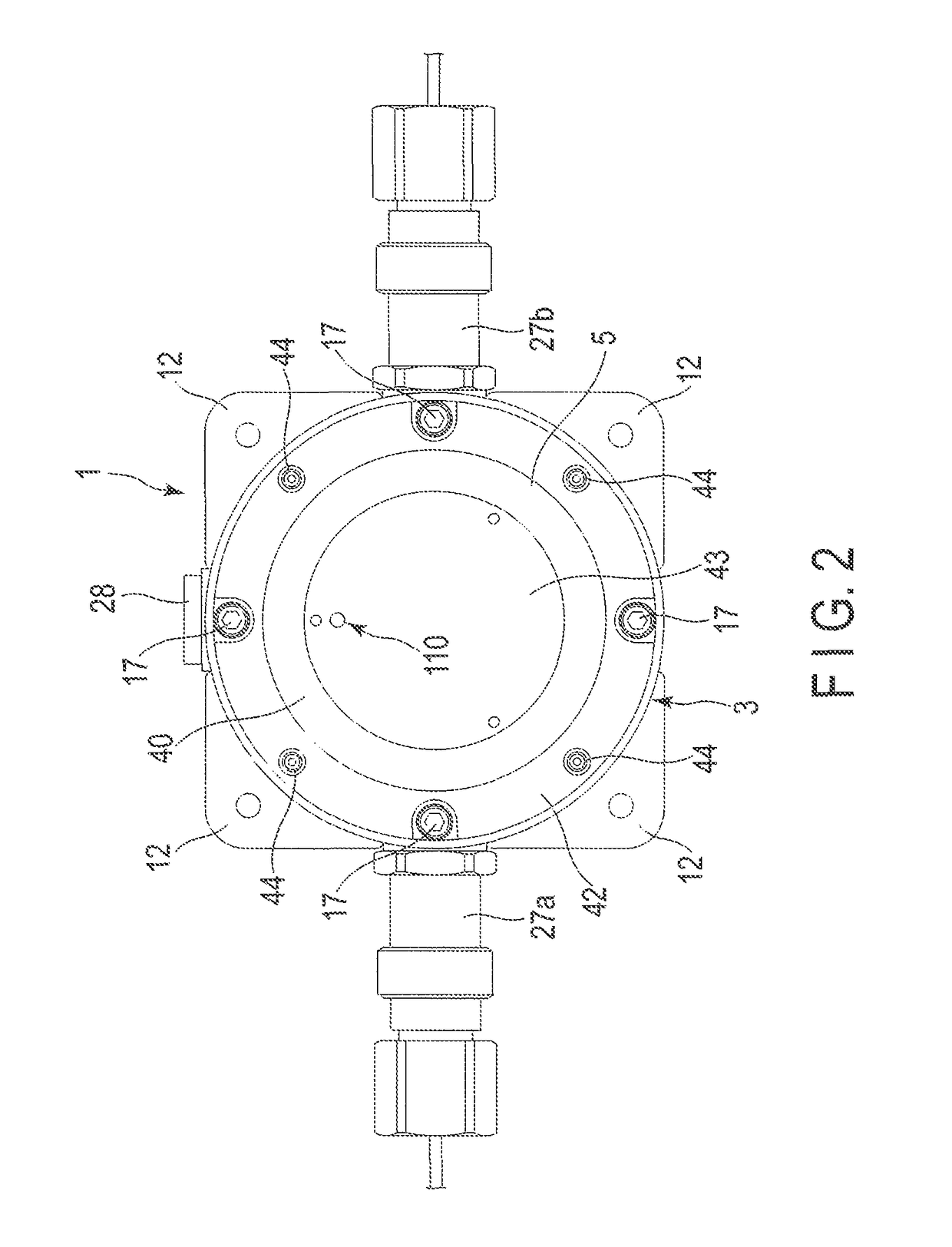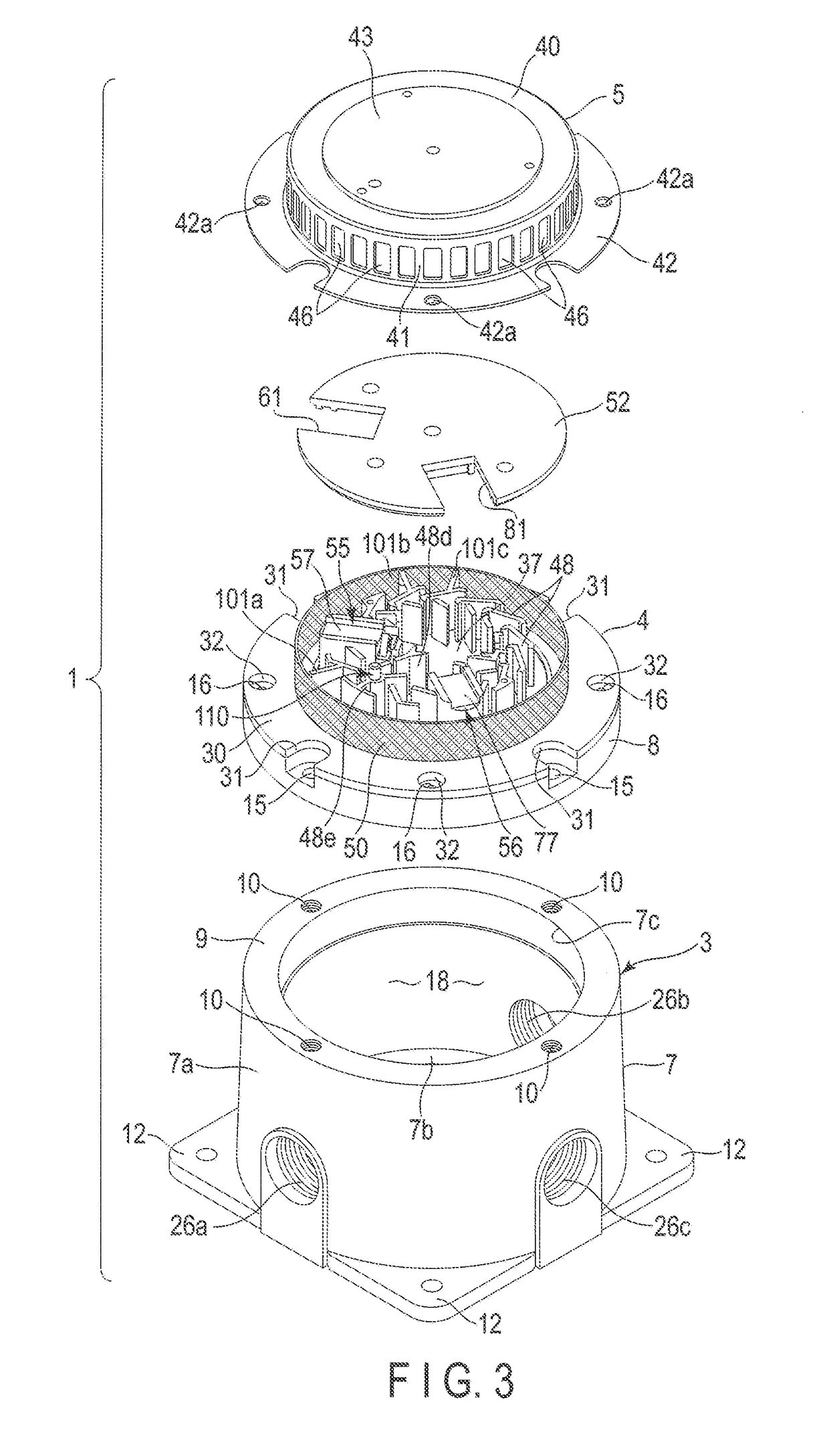Photoelectric smoke sensor
a technology of photoelectric smoke sensor and optical fiber, which is applied in the direction of fire alarm, smoke/gas actuation, instruments, etc., can solve the problems of deteriorating smoke detection performance, inability to avoid the growth insufficient explosion-proof performance of the photoelectric smoke sensor, etc., to achieve sufficient tightness of the housing, improve the explosion-proof property, and achieve sufficient explosion-proof performance
- Summary
- Abstract
- Description
- Claims
- Application Information
AI Technical Summary
Benefits of technology
Problems solved by technology
Method used
Image
Examples
first embodiment
[0058]A First Embodiment of the present invention will be described hereinafter with reference to FIG. 1 to FIG. 13.
[0059]FIG. 1 shows an integrated photoelectric smoke sensor 1 installed on a ceiling surface 2 of a building. The photoelectric smoke sensor 1 is exposed in a designated explosion-proof area Z in the building. As shown in FIG. 1 to FIG. 3, the photoelectric smoke sensor 1 comprises a housing 3, a chamber base 4, and a protective cover 5 as main elements.
[0060]The housing 3 is formed of, for example, a metal material such as an aluminum alloy. The housing 3 is divided into a main body base 7 and a main body cover 8. As shown in FIG. 3 to FIG. 5, the main body base 7 includes a cylindrical portion 7a and a bottom wall 7b which closes an end of the cylindrical portion 7a. The cylindrical portion 7a has an annular tip surface 9 positioned on a side opposite to the bottom wall 7b. The tip surface 9 is a flat surface orthogonal to axis O1 of the housing 3 passing through the...
second embodiment
[0203]FIG. 19 discloses a Second Embodiment. In the Second Embodiment, elements corresponding to the first to third guide walls 101a, 101b, and 101c of the First Embodiment are excluded from an outer peripheral portion of a labyrinth substrate 30. The basic configuration of the photoelectric smoke sensor 1 other than those is the same as that of the First Embodiment. For this reason, in the Second Embodiment, the same constituent portions as those in the First Embodiment are denoted by the same reference numerals and their explanations are omitted.
[0204]According to the Second Embodiment, a ventilation passage 51 positioned between a plurality of shielding walls 48 and an insect screen 50 maintains an annular shape continuous in a circumferential direction of a ventilation chamber 45. In other words, since the annular insect screen 50 is distant from the shielding walls 48, air flowing from the ventilation ports 46 of the protective cover 5 can easily pass through the insect screen ...
third embodiment
[0207]FIG. 20 to FIG. 22 disclose a Third Embodiment. FIG. 20 shows a state in which a separation type photoelectric smoke sensor 200 is installed on a ceiling surface 201 of a building. The photoelectric smoke sensor 200 comprises a light emitting unit 202 and a light receiving unit 203 which are independent of each other. Each of the light emitting unit 202 and the light receiving unit 203 is an example of an optical unit. The light emitting unit 202 and the light receiving unit 203 are exposed in a designated explosion-proof zone Z in the building and face each other while spaced apart.
[0208]As shown in FIG. 20, the light emitting unit 202 comprises a protective member204, a housing 205, and a light emitting portion 206 as main elements. The protective member 204 is, for example, a rectangular box-shaped element and comprises a front plate 208 having a light irradiation hole 207 opened, a bottom plate 210 having a through hole 209 opened, and a top plate 211 directly attached to ...
PUM
| Property | Measurement | Unit |
|---|---|---|
| pressure | aaaaa | aaaaa |
| size | aaaaa | aaaaa |
| size | aaaaa | aaaaa |
Abstract
Description
Claims
Application Information
 Login to View More
Login to View More - R&D
- Intellectual Property
- Life Sciences
- Materials
- Tech Scout
- Unparalleled Data Quality
- Higher Quality Content
- 60% Fewer Hallucinations
Browse by: Latest US Patents, China's latest patents, Technical Efficacy Thesaurus, Application Domain, Technology Topic, Popular Technical Reports.
© 2025 PatSnap. All rights reserved.Legal|Privacy policy|Modern Slavery Act Transparency Statement|Sitemap|About US| Contact US: help@patsnap.com



